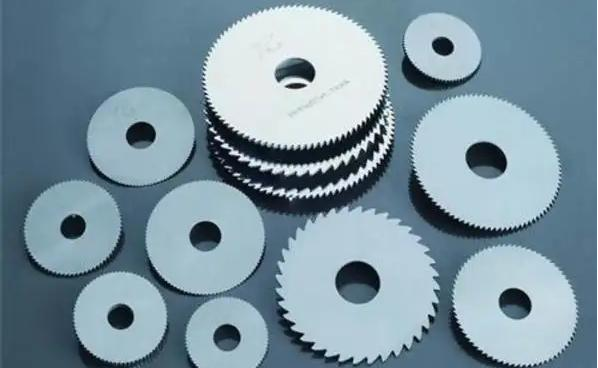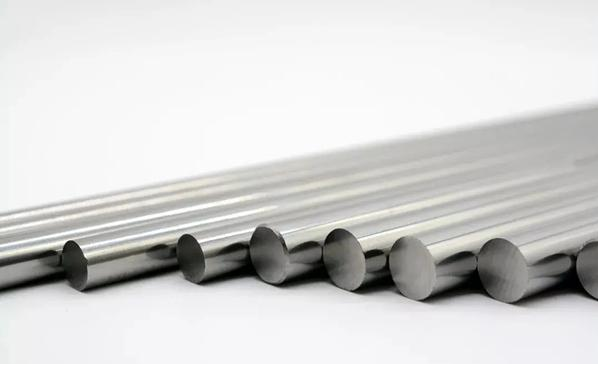
What is heat treatment?
Heat treatment is an important method for improving the structural properties of materials. Deep cryogenic treatment, as an extension and advancement of traditional heat treatment processes, has been widely applied in the field of materials heat treatment since the mid-20th century. For conventional steel materials, deep cryogenic treatment can transform residual austenite, enhancing the hardness of the workpiece and stabilizing its dimensions. It can precipitate ultra-fine carbides, improving the wear resistance of the workpiece. It can refine the grain structure, enhancing the impact toughness of tooling and molds. It can also improve the corrosion resistance of martensitic stainless steel and enhance the polishing performance of the workpiece. With the further development and maturity of liquid nitrogen cooling technology and insulation techniques, deep cryogenic treatment of carbide has also attracted the attention of industrial enterprises both domestically and internationally.
Current Status of Deep Cryogenic Treatment Process
Deep cryogenic treatment typically involves cooling the workpiece using liquid nitrogen, which can bring the temperature below -190°C. The microstructure of the treated material undergoes changes in a low-temperature environment, resulting in improved properties. Deep cryogenic treatment was initially proposed by the Soviets in 1939, but it wasn’t until the 1960s that the United States industrialized the technology and started applying it primarily in the aerospace field. In the 1970s, its application expanded to the mechanical manufacturing sector.
Cryogenic treatment process methods
There are two different methods based on the cooling approach: liquid-based and gas-based methods. The liquid-based method involves immersing the material or workpiece directly into liquid nitrogen, rapidly cooling it to the temperature of liquid nitrogen, and then maintaining it at this temperature for a certain period before raising the temperature to a desired level. This method has difficulties in controlling the cooling and heating rates, and it is believed to potentially cause damage to the workpiece due to thermal shocks. The equipment used for liquid-based deep cryogenic treatment is relatively simple, such as liquid nitrogen tanks.
On the other hand, the gas-based method utilizes the latent heat of vaporization of liquid nitrogen (approximately 199.54 kJ/kg) and the heat absorption of low-temperature nitrogen gas to achieve cooling. This method can reach a deep cryogenic temperature of -190°C. It involves bringing the workpiece into contact with low-temperature nitrogen gas, which then circulates through convection heat transfer. The nitrogen gas is vaporized after being sprayed through a nozzle inside a deep cryogenic chamber, utilizing the latent heat of vaporization and heat absorption of low-temperature nitrogen gas to cool the workpiece. The cooling rate can be controlled by adjusting the input of liquid nitrogen, allowing for automatic and precise control of the deep cryogenic treatment temperature. This method imposes less thermal shock and reduces the likelihood of cracking. Currently, the gas-based method is widely accepted by researchers in the field and its cooling equipment mainly consists of temperature-controlled programmable deep cryogenic chambers.
Deep cryogenic treatment can significantly improve the service life, wear resistance, and dimensional stability of materials such as ferrous metals, non-ferrous metals, and metal alloys. It offers considerable economic benefits and market prospects.

The development history of deep cryogenic technology
The application of deep cryogenic technology to carbide?was first reported in the 1980s and 1990s. In 1981, Japan’s “Mechanical Technology” and in 1992, the US’s “Modern Machine Shop” reported significant improvements in performance after deep cryogenic treatment of carbide. Since the 1970s, foreign research on deep cryogenic treatment has been highly productive, with countries such as the former Soviet Union, the United States, and Japan successfully utilizing deep cryogenic treatment to enhance the service life, wear resistance, and dimensional stability of tooling and workpieces. The practical application of deep cryogenic treatment by a US tooling company demonstrated that the service life of treated carbide?blades increased by 2 to 8 times, while the refurbishment cycle of carbide?wire drawing dies extended from a few weeks to several months.
In the 1990s, research on deep cryogenic technology for carbide?was initiated in China, achieving certain research results. However, overall, there has been relatively limited and fragmented research on deep cryogenic treatment for carbide. The conclusions obtained from existing research are also inconsistent, indicating the need for further in-depth exploration by researchers. Based on existing research data, it is evident that deep cryogenic treatment primarily improves the wear resistance and service life of carbide, with less noticeable effects on their physical properties.

The strengthening mechanisms of deep cryogenic treatment
Phase transformation strengthening
carbide contain two crystal structures of cobalt (Co): face-centered cubic (α-phase) and hexagonal close-packed (ε-phase). The ε-phase has a smaller friction coefficient and better wear resistance compared to the α-phase. At temperatures above 417°C, the α-phase has lower free energy, so Co exists in the α-phase form. Below 417°C, the ε-phase has lower free energy, and the high-temperature stable α-phase transforms into the energetically favored ε-phase. However, due to the presence of WC particles and solute atoms in the α-phase, there are significant constraints on the phase transformation, making the transformation from α-phase to ε-phase more difficult. Deep cryogenic treatment increases the free energy difference between the α and ε phases, enhancing the phase transformation driving force and increasing the amount of ε-phase transformation. Deep cryogenic treatment causes some atoms dissolved in Co to precipitate as compounds due to decreased solubility, increasing the hard phase in the Co matrix, hindering dislocation movement, and providing strengthening through the second-phase particle effect.
Surface residual stress strengthening
Studies have shown that deep cryogenic treatment increases the residual compressive stress in the surface layer. Many researchers believe that the presence of a certain level of residual compressive stress in the surface layer significantly improves the service life of carbide. During the cooling process after sintering, the binder phase Co experiences tensile stress, while the WC particles experience compressive stress. Tensile stress can cause damage to the Co binder. Therefore, some researchers believe that the increase in surface compressive stress caused by deep cryogenic treatment can alleviate or partially offset the tensile stress generated during the cooling process after sintering in the binder phase, and even adjust it to compressive stress, reducing the formation of microcracks.
Otros mecanismos de fortalecimiento
It is believed that after deep cryogenic treatment, the formation of η-phase particles in the matrix, along with the WC particles, makes the matrix denser and more robust. The formation of η-phase also consumes the Co in the matrix. The decrease in Co content in the binder phase increases the overall thermal conductivity of the material. The growth of carbideparticle size and adjacency also enhances the thermal conductivity of the matrix. The increased thermal conductivity allows for faster heat dissipation at the cutting edge of the tooling, improving wear resistance and high-temperature hardness. Additionally, the contraction and densification of Co during deep cryogenic treatment strengthen the Co’s grip on the WC particles. Physicists believe that deep cryogenic treatment alters the atomic and molecular structure of the metal, leading to improved properties.
Overall, deep cryogenic treatment enhances the wear resistance and service life of carbide?primarily by the phase transformation strengthening and surface residual stress strengthening mechanisms, while the impact on physical properties is less significant.









